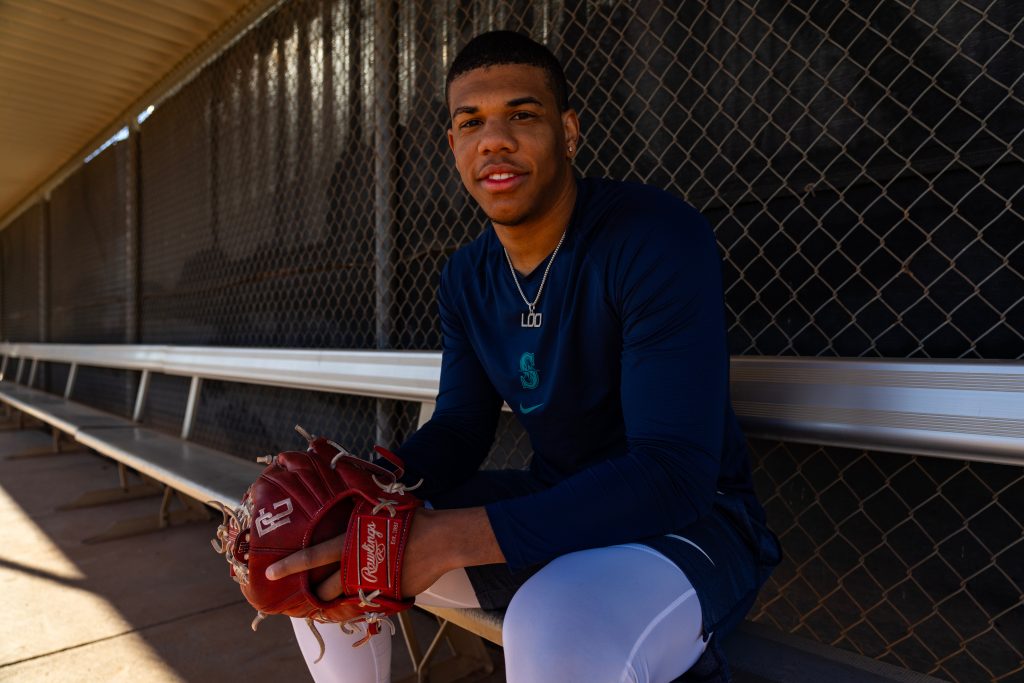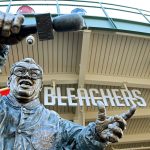‘It’s Gonna Be Special’: Jurrangelo Cijntje, Seattle’s Switch-Pitching Wonder, takes the Minor Leagues By Storm
With a six-fingered glove on his hand, Jurrangelo Cijntje takes to the mound each appearance for Everett AquaSox to loud applause. The crowd, however, isn’t here to watch the No. 9 prospect in the Mariners’ system. No. They’re here to see if tonight he pitches with both hands.
Cijntje, an ambidextrous pitcher, has taken Minor League Baseball by storm since being drafted by Seattle in 2024. It’s chaos, then confusion, then awe as fans and announcers alike suddenly realize he can throw with both arms. It would be special even if the 22-year-old could only throw a few pitches with each.
But the Mariners are betting on something greater.
Seattle believes Cijntje will be lights out on both sides of the mound. He’s shown glimpses of it in collegiate baseball, pitching for Mississippi State, and in preseason camp. The next step is training, giving the Curaçaoan enough fuel to work with to set the entirety of baseball ablaze.
“Every day amazes us to the point where we’re numb to it, but then when we go and play another team, [and] the other pitching coaches will be watching Cijntje more than their own pitchers,” said Quinn Cleary, the Mariners pitching coordinator.
Seattle believes that the amount of effort going into Cijntje is worth it, but it’s not the first time a team has bet big on the two-arm wonder. Across the country – down in marsh country – the city of Starkville, Mississippi, knew Cijntje well. After all, in a city with fewer than 25,000 residents, it’s not hard to miss the kid who throws from both sides of the mound.
Through the sweltering heat and college-town vibes, whispers of Cijntje’s potential escaped the small town and filtered around the SEC. The biggest question still remained: what can he actually do?
Cijntje first joined the Bulldogs in 2023 as a switch-hitter and switch-pitcher. His journey began years prior, with his father, Mechangelo, who played baseball in the Netherlands. At one point, Cijntje stopped using his left hand, a habit his father quickly rebuked him on.
“He always told me, ‘I think for you to make it somewhere, I think you’re gonna be a pitcher,’” Cijntje said. “And, he said, ‘For sure, you need that left side… you have to keep using the left side and keep that arm around because I think it’s gonna be special, and that’s gonna make you go far.’”
His cousins, baseball players at Florida National University, then took him in, so he could attend high school at 16 years old at Champagnat Catholic School in Hialeah, Miami. His journey – from pitching and playing short in the 2016 Little League World Series to a 2018 U-15 Baseball World Cup visit in Panama – stretched across multiple states, countries and continents.
Despite all his makings of a star, his first year at Mississippi State featured more bumps in the road than successes. As a freshman, he had a 3-5 record as a starter with an 8.10 ERA. When Mississippi State introduced a new pitching coach, Justin Parker, worries arose about whether Cijntje would stay., Any coaching shake-up always runs the risk of a mass exodus.
“I just really respect him, and I love him to death,” Parker said. “I love him for having faith and trust in me and staying at Mississippi State when so many kids would have been on the move, and I’m rooting for him. He’s such a wonderful kid.”
Parker accredits Cijntje’s success to his quiet confidence and his willingness to work. His personality makes the long days studying the hours of tapes – twice the amount of any other pitcher on the team – worth it. When Parker heard about Cijntje’s success in the Mariners’ Spring Breakout game on March 14, the pride in his voice was evident.
Maybe, it was due to the effort Parker put into helping the ambidextrous pitcher develop. Cijntje is a rarity as far as pitchers go. Switch hitters have existed since 1870 with Bob Ferguson and the Brooklyn Atlantics. So, why not ambidextrous pitchers? Simply put, time.
Imagine the work it took for the Yankees’ Gerrit Cole or the Dodgers’ Tyler Glasnow to advance through the farm system. Imagine how long it takes to work on grips and control and all the other essentials: breaking sliders, tunneling, calming the nerves enough to step on a mound. It takes a grueling amount of time, energy and resources to advance through each level before taking the mound under the brightest lights on the sport’s biggest stage.

Now, do it twice. Essentially, that’s what the Mariners are dealing with. It’s a double-trouble situation for the team, especially with the workload. Both Cole and Glasnow underwent Tommy John surgery after their throwing arms eventually gave in. And, the Yankees’ and Dodgers’ medical teams only have to worry about one arm.
“We don’t want to mess up. We don’t want to get injured,” Cleary said. “I don’t know if we have a perfect answer for it right now, but we’re trying to make it so that he’s not having high-intensity days three or four days a week.”
Cijntje needed guidance from someone who’s already done it before. So, Parker reached out to MLB’s most recent switch-pitchers who, in a fun coincidence, also played for Seattle: Pat Venditte.
The Omaha, Nebraska, native was a trailblazer for switch pitchers in the league after the Yankees drafted Venditte in 2008. However, both Minor League and Major League Baseball struggled to adapt.
Suddenly, the rules that had gone unchallenged for years had loopholes. For example, if there’s both a switch-pitcher and a switch-batter, who has to declare first? In 2008, the leagues devised the “Pat Venditte rule.” In essence, the pitcher must indicate what side he’s throwing from first.
Throughout his time in the majors, Venditte balanced sliders, cutters and fastballs on his right arm while throwing sidearm with his left. Cijntje, on the other hand, prioritizes speed in both arms, topping out at 99 mph in his right hand.
“He is a different beast,” Venditte told The Athletic last year. “The paths that we will take to get to the big leagues will be far different. His, I have a feeling, will be fast, whether that’s one arm or two. He’s got the stuff from both sides.”
Cijntje ended his last season in collegiate baseball, guided by advice from Venditte. He significantly lowered his earned runs, ending with a 3.67 ERA as well as an 8-2 record. In his last month pitching for the Bulldogs, he looked almost like every other right-handed pitcher, never throwing a pitch once from his left side.
To some, the sudden switch would be concerning. Cijntje shrugged it off, literally.
“I remember him looking, smiling and shrugging his left arm, like ‘I slept on it wrong,’” Parker said. “And I was thinking, ‘That sounds great to me because I felt like he was even better down the stretch once he did that.”
In the Mariners’ farm system, Cijntje continues to show a high ceiling. In the four games he started so far, he posted a 2.35 ERA with 19 strikeouts and only nine walks. His numbers as a reliever are a bit more troublesome: five earned runs in only 1 2/3 innings pitched. However, it’s April, and Cijntje still has more than enough baseball left to improve.
Still, too many unknowns stop scouts and the organization from fully predicting his next steps. Does he fill multiple spots in the starting rotation in a one-game-per-arm fashion? Does he turn into an elite bullpen arm or maybe even a two-handed closer?
No one knows. It’s up to Cijntje, time and his unwritten path known only by the baseball gods. But neither Seattle nor Cijntje is inclined to let the rare opportunity slip from their fingers.
“This is cool. This is real,” Cleary said. “I don’t know what his future is going to look like exactly, but this, this is real cool.”
Category: Seattle Mariners, Top Stories
Tagged: al west jurrangelo Seattle Mariners


